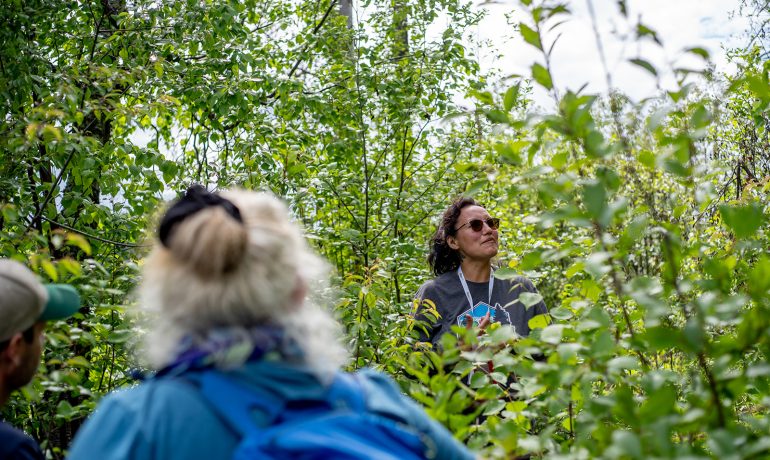The community forests in Nakusp and Harrop-Procter have each recently received grants from the Forest Enhancement Society of BC (FESBC) that will reduce carbon emissions by utilizing wood fibre that otherwise would have been burned as slash.
Both community forests are using their FESBC grants to ship wood waste to Zellstoff Celgar in Castlegar to be used for pulp. The Nakusp and Area Community Forest (NACFOR) received $19,909 and Harrop-Procter received $40,000 in this latest round of FESBC funding.
NACFOR’s FESBC project is being done in partnership with Interfor, and is part of the larger pilot project happening in the community to reduce wildfire risk. The pilot project involves all licencees in the area and is a collaborative approach to wildfire management. The wood waste from two Interfor cutblocks, which are being logged with wildfire risk reduction in mind, will be shipped to the Castlegar pulp mill with the FESBC funding.
“The non-merchantable timber that is being shipped to Celgar would typically be burned, so we’re reducing emissions by shipping it,” says Frances Swan, NACFOR project manager. “We also reduce the wildfire risk when we take away the residual fuels.”
Nakusp and Harrop-Procter Community Forests get grants to avoid burning slash Swan says that since 2017-18, NACFOR has secured $586,000 in funding from various sources for fuel management projects.
Nakusp, Kaslo and Creston were all selected to pilot community-wide, collaborative wildfire mitigation projects – an initiative of the RDCK. Swan says these communities were selected because they have current Community Wildfire Protection Plans and have already done some wildfire mitigation work.
The Harrop-Procter Community Forest is also using the FESBC funds to reduce both wildfire risk and carbon emissions.
“Eliminating slash pile burning is a low hanging fruit as far as carbon emissions go,” says Erik Leslie, forest manager at the Harrop- Procter Community Forest. “You’re avoiding emitting the carbon on day one – it has a benefit right away. Using carbon dollars to fund fuel treatment, which has a carbon benefit, is a win-win.”
The FESBC funds will be used to treat 70 hectares above Harrop over the next two years.
Leslie says fuel treatment projects to reduce wildfire risk are not really money-making propositions, so this funding is appreciated. “We leave the bigger trees, like Douglas fir and larch, and remove lots of small trees that are often less valuable. In order to make it work, you have to find a way to make use of or get rid of those small trees. Slash burning is by far the cheapest method, but everyone knows how much slash has been burned over the decades in the bush and we don’t want to do it anymore. We want to get it to Celgar where it will be made into chips and used for pulp.”
Leslie says Celgar has recently started to accept very small trees – quite a bit smaller than they used to.
He says the FESBC funding works out to about $10-$12 per cubic metre or $500 per truckload – about a 15-20% subsidy. “We requested funds to help us pay for the difference between what Celgar will pay us for this low value material, which generally would have been burned in the past, and our costs to cut it down, collect it, process it, load it on trucks and haul it. The funding allows us to ship it and at least break even. It’s just that extra little bit of funding to go from seriously losing money to breaking even.
“We’re doing these jobs for public benefit – not the great heaps of cash they generate.”
The Harrop-Procter Community Forest is currently doing a three-year fuel treatment project above Procter, which was also partly funded by FESBC.
IMAGE: The Nakusp and Harrop-Procter Community Forests have both received grants to ensure that wood waste gets down to Celgar to be used for pulp. Pictured here is Oliver Hale, who does work for Harrop-Procter Community Forest. (Image credit – Erik Leslie)
Related Post
As Published in Canadian Forest Industries Magazine, Pulp & Paper Magazine and Canadian Biomass Magazine
Jennifer Gunter’s Op Ed, “Community Forests: Rooted in Community,
Minister of Forests Mandated to Expand BC’s Community Forest Program
In the recently released mandate letter to the Minister



